- Tips and Tricks for Growing Gooseberries
- 1. Choose the Right Variety
- 2. Planting
- 3. Provide Adequate Water
- 4. Pruning
- 5. Fertilizing
- 6. Pest and Disease Control
- 7. Harvesting
- Growing Gooseberries in Your Garden
- Choose the right variety
- Planting
- Pruning
- Fertilizing
- Watering
- Pest and Disease Control
- Harvesting
- Choosing the Right Variety of Gooseberries
- Consider your climate and growing conditions
- Decide on the type of gooseberries you prefer
- Research different varieties
- Consult with local experts
- Compare and choose
- Preparing the Soil for Gooseberries
- 1. Choose a well-drained location
- 2. Test the soil pH
- 3. Remove weeds and grass
- 4. Dig the soil
- 5. Add organic matter
- 6. Incorporate fertilizer
- 7. Create raised beds
- 8. Mulch the planting area
- Planting Gooseberries
- 1. Choose the right variety
- 2. Prepare the soil
- 3. Plant in the right location
- 4. Dig a hole
- 5. Water regularly
- 6. Mulch around the plant
- 7. Prune annually
- 8. Fertilize regularly
- Caring for Gooseberry Plants
- 1. Choosing the Right Location
- 2. Soil Preparation
- 3. Planting
- 4. Watering
- 5. Mulching
- 6. Pruning
- 7. Fertilizing
- 8. Pest and Disease Control
- Protecting Gooseberries from Pests and Diseases
- 1. Site Selection
- 2. Cleanliness
- 3. Pruning
- 4. Mulching
- 5. Netting
- 6. Pest Control
- 7. Disease Control
- 8. Watering
- 9. Regular Inspections
- Harvesting and Storing Gooseberries
- 1. Timing:
- 2. Harvesting:
- 3. Storing:
- 4. Enjoying Fresh or Preserved:
- Growing Gooseberries for Hen’s Egg-Sized Berries
- Choose the Right Variety
- Plant in the Right Location
- Provide Adequate Water
- Prune Regularly
- Fertilize Appropriately
- Protect from Pests
- Harvest at the Right Time
- Question-answer:
- What are some tips for growing gooseberries?
- Can gooseberries grow in any climate?
- How long does it take for gooseberries to produce hen’s egg-sized berries?
- Are there any pests or diseases that affect gooseberries?
- What is the best time to prune gooseberry bushes?
- Can gooseberries be grown in containers?
- How often should gooseberry plants be watered?
- Video: Growing Cape Gooseberries for the 1st time | Superfood
Gooseberries are a delicious, tart fruit that can be a delightful addition to any garden. With a little know-how and some patience, you can grow gooseberries that are as big as hen’s eggs! In this article, we will share some tips and tricks to help you achieve this impressive feat.
First and foremost, it’s important to choose the right variety of gooseberry to grow. There are several varieties available, but you’ll want to select one that is known for producing large berries. Look for varieties such as ‘Invicta’ or ‘Leveller’ which are known for their exceptionally large fruit.
Next, pay attention to the soil and location for your gooseberry bushes. Gooseberries thrive in well-drained soil that is rich in organic matter. It’s also important to choose a sunny location, as gooseberries need plenty of sunlight to produce large berries. If you don’t have a suitable spot in your garden, you can also consider growing gooseberries in containers.
Another key factor in growing gooseberries to produce large berries is proper pruning. Gooseberry bushes benefit from regular pruning, which helps to stimulate new growth and increase fruit production. Prune your bushes in early spring, removing any dead or damaged branches and thinning out the remaining branches to promote air circulation.
Finally, don’t forget to fertilize your gooseberry bushes regularly. Gooseberries are heavy feeders and require regular doses of fertilizer to grow big, juicy berries. Use a balanced fertilizer formulated specifically for fruiting plants, and follow the instructions on the package for application rates.
By following these tips and tricks, you can grow gooseberries that are as big as hen’s eggs and have a bountiful harvest of delicious fruit to enjoy. So why wait? Get started on your gooseberry growing adventure today!
Tips and Tricks for Growing Gooseberries
Gooseberries are a delicious and nutritious fruit that can be grown in your own backyard. With the right techniques and care, you can produce gooseberries that are as big as hen’s eggs. Here are some tips and tricks to help you grow gooseberries successfully:
1. Choose the Right Variety
There are different varieties of gooseberries available, each with its own characteristics. When selecting a variety, look for one that is known for producing large berries. Some popular varieties include Invicta, Leveller, and Xenia.
2. Planting
When planting gooseberries, choose a sunny spot in your garden with well-draining soil. Gooseberries prefer slightly acidic soil, so a pH level of around 6.0 to 6.5 is ideal. Dig a hole that is wide and deep enough to comfortably accommodate the root ball of the plant. Space the plants about 3 to 4 feet apart to allow for proper air circulation.
3. Provide Adequate Water
Gooseberries require regular watering to keep the soil consistently moist. However, be careful not to overwater them, as this can lead to root rot. Water deeply and evenly, especially during dry spells or hot weather.
4. Pruning
Pruning is an essential part of growing gooseberries. It helps to maintain the shape of the plant, improve air circulation, and stimulate new growth. Prune your gooseberry bushes in late winter or early spring when they are dormant. Remove any dead or diseased branches, as well as any crossing or crowded branches. Aim to create an open center with a few main branches.
5. Fertilizing
Gooseberries benefit from regular fertilizing to promote healthy growth and abundant fruit production. Use a balanced fertilizer with a ratio of 10-10-10 or 14-14-14. Apply the fertilizer in early spring before new growth starts, following the package instructions for dosage.
6. Pest and Disease Control
Gooseberries can be susceptible to certain pests and diseases, such as aphids, powdery mildew, and gooseberry sawfly. Monitor your plants regularly and take appropriate action at the first sign of infestation or disease. There are organic options available for controlling these pests, such as neem oil and insecticidal soap.
7. Harvesting

Gooseberries are ready for harvest when they have reached their full size and developed their characteristic color. Gently pick the berries from the plant, being careful not to damage the surrounding branches. Handle the berries with care as they can bruise easily.
By following these tips and tricks, you can successfully grow gooseberries and enjoy the satisfaction of harvesting hen’s egg-sized berries.
Growing Gooseberries in Your Garden
Gooseberries are a delicious and nutritious fruit that can be grown in your own garden. When properly cared for, gooseberries can provide you with a bountiful harvest of sweet and tangy berries. Here are some tips to help you get started:
Choose the right variety
There are several different varieties of gooseberries, each with its own unique characteristics. Some varieties are better suited for cooking, while others are perfect for eating fresh. Consider your preferences and needs when selecting a variety to plant in your garden.
Planting
When planting gooseberries, choose a location that receives full sun and has well-draining soil. Prepare the soil by removing any weeds and adding organic matter, such as compost or well-rotted manure. Dig a hole that is slightly larger than the root ball of the gooseberry plant and place the plant in the hole, ensuring that the crown of the plant is level with the soil surface. Fill in the hole with soil and gently firm it around the plant.
Pruning
Pruning is essential for gooseberries to ensure good air circulation, prevent disease, and encourage fruit production. Prune your gooseberry bushes in late winter or early spring while they are still dormant. Remove any dead, damaged, or crossing branches. It’s also a good idea to thin out the branches to allow sunlight to reach the inner parts of the plant. This will help promote better fruit development.
Fertilizing
To ensure healthy growth and fruit production, it’s important to fertilize your gooseberries. Apply a balanced fertilizer in early spring before new growth appears. Follow the manufacturer’s instructions for application rates. You can also mulch around the base of the plants with organic matter to help retain moisture and suppress weeds.
Watering
Gooseberries need consistent moisture, especially during dry spells. Water the plants deeply and regularly, being careful not to overwater. Aim to keep the soil evenly moist but not waterlogged. Using a layer of mulch around the base of the plants can help retain moisture and reduce evaporation.
Pest and Disease Control
Gooseberries are susceptible to a number of pests and diseases, including aphids, sawflies, and powdery mildew. Regularly inspect your plants for any signs of infestation or disease and take appropriate action. This may include handpicking pests, applying organic or chemical sprays, or pruning affected plant parts.
Harvesting
When the berries are fully ripe and have reached their desired size and color, it’s time to harvest them. Simply gently grasp the berries and twist them off the plant. Be careful not to damage the plant or other berries. Harvesting can usually begin in mid to late summer, depending on the variety and your location.
Following these tips will help you successfully grow gooseberries in your garden. With a little care and attention, you’ll be able to enjoy a harvest of delicious gooseberries year after year.
Choosing the Right Variety of Gooseberries
When it comes to growing gooseberries, it’s important to choose the right variety that suits your growing conditions and preferences. With a wide range of gooseberry varieties available, you can find options that produce large hen’s egg-sized berries, along with other desirable traits such as disease resistance and thornlessness.
Consider your climate and growing conditions
Before selecting a gooseberry variety, it’s important to consider your climate and growing conditions. Gooseberries generally prefer cool, temperate climates, although some varieties can tolerate a wider range of conditions.
Take note of the average winter temperatures and the length of your growing season. Some gooseberry varieties require a certain number of chilling hours during winter to break dormancy and produce a good crop in the following season.
Decide on the type of gooseberries you prefer
There are two main types of gooseberries: American and European. American gooseberries are smaller and have a tart flavor, while European varieties are larger and sweeter. Consider your preference for taste and intended use when choosing a variety.
Research different varieties
Take the time to research different gooseberry varieties and their specific traits. Consider factors such as berry size, flavor, disease resistance, and growth habits.
You can find a variety of resources online, including websites, forums, and gardening publications, that provide information on different gooseberry varieties. Take note of the experiences and recommendations of other growers in your area.
Consult with local experts
If you’re unsure about which gooseberry variety to choose, don’t hesitate to seek advice from local gardening experts or nursery professionals. They are knowledgeable about the specific growing conditions in your area and can recommend varieties that will thrive in your climate.
Compare and choose
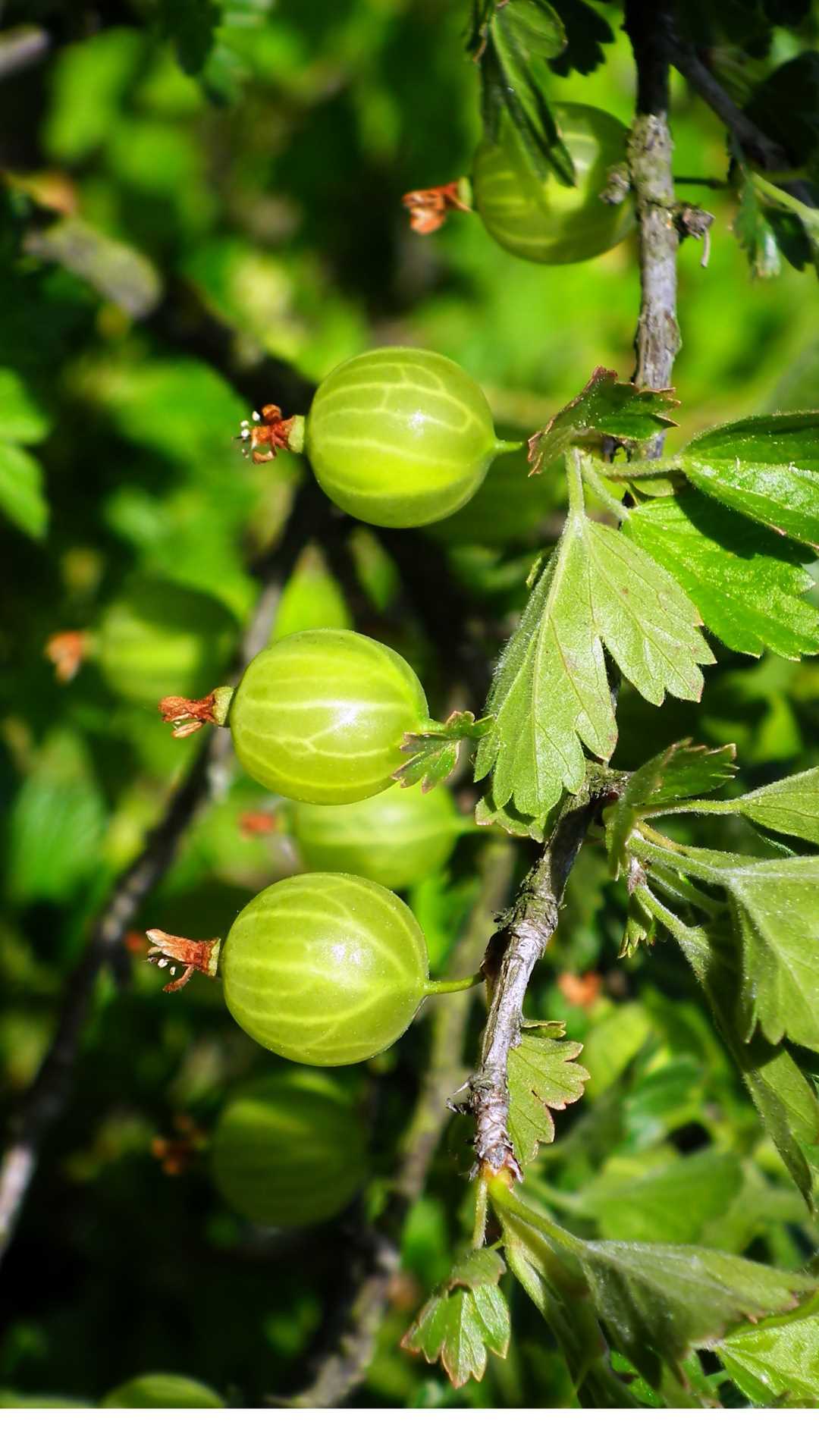
Once you have gathered information about different gooseberry varieties and consulted with experts, it’s time to compare and choose the right variety for your needs.
Consider factors such as your climate, taste preferences, and desired berry size. Create a list of the top varieties that meet your criteria and compare their traits to make an informed choice.
Ultimately, selecting the right variety of gooseberries is crucial for a successful and rewarding growing experience. With careful consideration and research, you can find a variety that will produce hen’s egg-sized berries and meet your specific preferences.
Preparing the Soil for Gooseberries
Before planting gooseberries, it is crucial to prepare the soil properly to ensure healthy growth and optimum fruit production. Here are some tips to help you prepare the soil for your gooseberry plants:
1. Choose a well-drained location
Gooseberries thrive in well-drained soil, so it is important to select a planting location with good drainage. Avoid areas that tend to become waterlogged or have poor drainage, as this can lead to root rot and other problems.
2. Test the soil pH
Gooseberries prefer slightly acidic to neutral soil. Test the soil pH using a soil testing kit or by sending a soil sample to a local agricultural extension office. If the soil is too acidic, you can add dolomite lime to raise the pH. If the soil is too alkaline, you can add sulfur or peat moss to lower the pH.
3. Remove weeds and grass
Before planting, remove any weeds, grass, or other vegetation from the planting area. This will help prevent competition for nutrients and reduce the risk of pests and diseases.
4. Dig the soil
Using a garden fork or a spade, dig the soil to a depth of about 12 inches (30 cm). Break up any large clumps and remove any rocks or debris that you encounter.
5. Add organic matter
Gooseberries benefit from the addition of organic matter, such as compost or well-rotted manure. Spread a layer of organic matter over the planting area and mix it into the soil. This will improve soil fertility, moisture retention, and drainage.
6. Incorporate fertilizer
Before planting, incorporate a balanced fertilizer into the soil. Follow the recommended application rates on the fertilizer package. This will provide essential nutrients for the gooseberry plants to thrive.
7. Create raised beds
Consider creating raised beds for your gooseberry plants, especially if you have heavy clay soil or poor drainage. Raised beds improve soil drainage and prevent waterlogging, which can be detrimental to gooseberry plants.
8. Mulch the planting area
After planting, mulch the area around the gooseberry plants with a layer of organic mulch, such as straw or wood chips. Mulch helps retain soil moisture, suppresses weed growth, and moderates soil temperature.
By following these soil preparation tips, you can create an ideal growing environment for your gooseberry plants and increase the chances of producing large, hen’s egg-sized berries.
Planting Gooseberries
Planting gooseberries is an important step in growing hen’s egg-sized berries. Here are some tips and tricks to help you get started:
1. Choose the right variety
When planting gooseberries, it’s important to choose a variety that is known for producing large berries. Look for varieties such as ‘Achilles’ or ‘Careless’ that are specifically bred for their size.
2. Prepare the soil
Before planting gooseberries, it’s important to prepare the soil by removing any weeds or grass. Gooseberries prefer well-drained soil with a pH level between 6 and 7. Add organic matter, such as compost or well-rotted manure, to improve the soil’s fertility.
3. Plant in the right location
Gooseberries thrive in full sun, but can tolerate partial shade. Choose a location in your garden that receives at least 6 hours of sunlight per day. Avoid planting gooseberries in low-lying areas that can become waterlogged.
4. Dig a hole

Dig a hole that is twice the size of the gooseberry plant’s root ball. Place the plant in the hole, ensuring that the bud union is level with the soil surface. Backfill the hole with soil and gently firm it around the plant.
5. Water regularly
After planting, water the gooseberry plant regularly. They require consistent moisture, especially during dry periods. Avoid overwatering, as this can lead to root rot.
6. Mulch around the plant
Apply a layer of organic mulch, such as wood chips or straw, around the base of the gooseberry plant. This will help conserve moisture, suppress weeds, and regulate soil temperature.
7. Prune annually
Prune your gooseberry plant annually to remove weak or crossing branches. This will improve air circulation and promote better fruit production. Prune in late winter or early spring before the plant starts to grow.
8. Fertilize regularly
Feed your gooseberry plant every spring with a balanced organic fertilizer. This will provide the nutrients needed for healthy growth and abundant fruit production.
By following these planting tips and tricks, you’ll be on your way to growing gooseberries that produce hen’s egg-sized berries. Enjoy the sweet and juicy fruits straight from your garden!
Caring for Gooseberry Plants

Gooseberry plants require regular care to ensure healthy growth and abundant fruit production. Here are some tips for caring for your gooseberry plants:
1. Choosing the Right Location
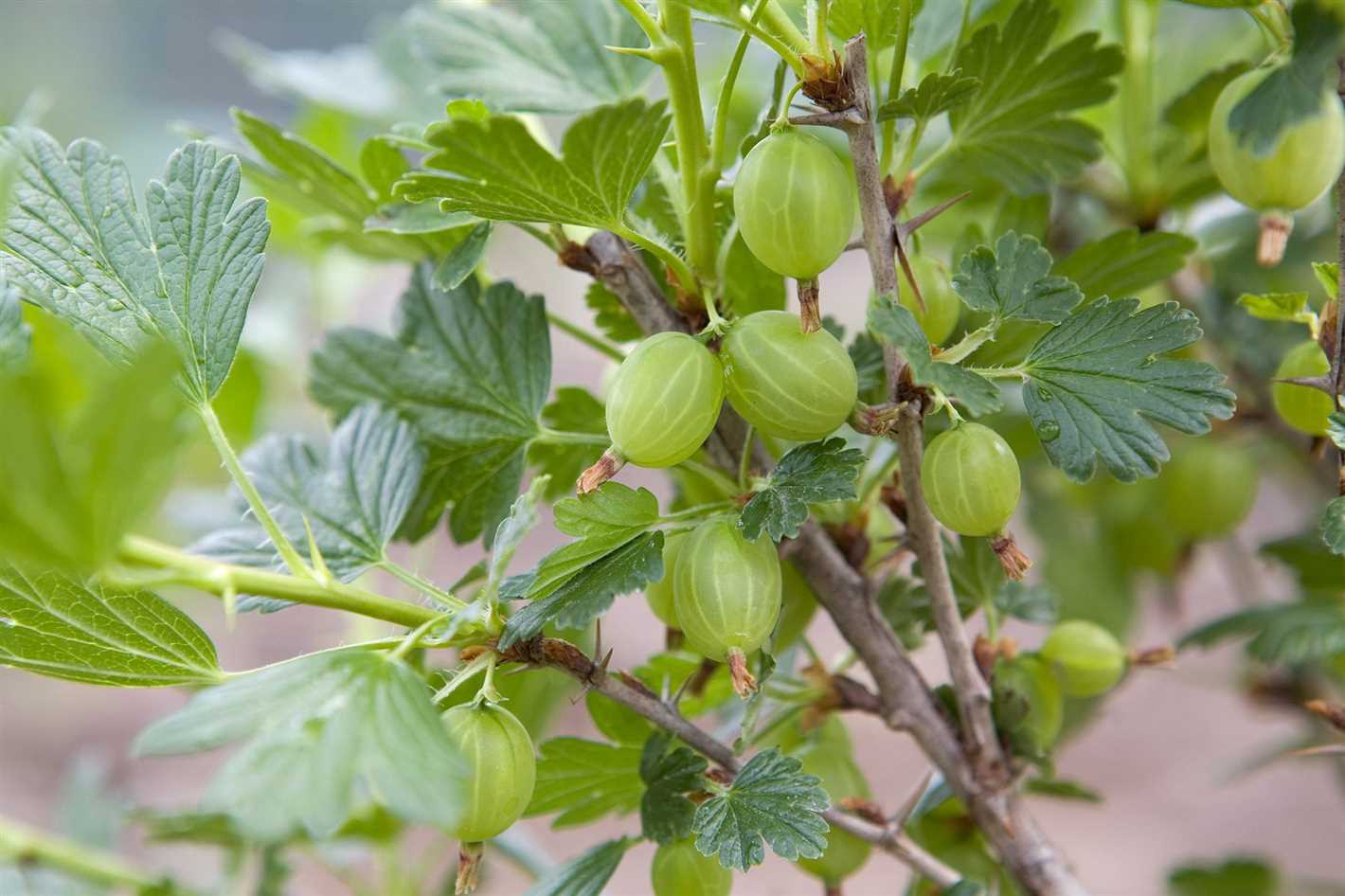
Gooseberry plants thrive in full sun or partial shade. Choose a location with well-drained soil that is fertile and slightly acidic. Avoid planting gooseberries in areas prone to waterlogging, as this can lead to root rot.
2. Soil Preparation
Before planting gooseberries, prepare the soil by removing any weeds or grass. Dig a hole that is wide and deep enough to accommodate the root ball of the plant. Mix organic matter, such as compost or well-rotted manure, into the soil to improve fertility and drainage.
3. Planting
Plant gooseberry bushes in early spring, while they are still dormant. Space the plants about 4-6 feet apart to allow for good air circulation. Place the root ball in the hole and backfill with soil, firming it gently around the roots.
4. Watering
Water gooseberries regularly, especially during dry periods. Aim to keep the soil consistently moist, but not waterlogged. Avoid overhead watering, as wet foliage can increase the risk of fungal diseases.
5. Mulching
Apply a layer of mulch around the base of the gooseberry plants to suppress weeds and conserve moisture. Use organic materials, such as straw or wood chips, and spread them to a depth of 2-3 inches.
6. Pruning
Prune gooseberry plants annually to maintain their shape and promote fruiting. In late winter or early spring, remove any dead, damaged, or crowded branches. Also, thin out the center of the plant to improve airflow.
7. Fertilizing
Feed gooseberry plants with a balanced fertilizer in early spring, before new growth begins. Follow the manufacturer’s instructions for application rates. Avoid over-fertilizing, as this can lead to excessive vegetative growth at the expense of fruit production.
8. Pest and Disease Control
Regularly inspect your gooseberry plants for signs of pests or diseases, such as aphids, powdery mildew, or gooseberry sawfly. Use organic or chemical controls as necessary, following the instructions provided.
By following these care tips, you can enjoy healthy, productive gooseberry plants that produce delicious hen’s egg-sized berries.
Protecting Gooseberries from Pests and Diseases
Gooseberries can be susceptible to various pests and diseases, but with proper care and preventive measures, you can protect your gooseberry plants and ensure healthy growth. Here are some tips to help you protect your gooseberries:
1. Site Selection
Choose a well-drained site for planting your gooseberries. Avoid areas with excessive moisture, as this can promote the growth of fungal diseases.
2. Cleanliness
Keep the area around your gooseberry plants clean and free from debris. Remove fallen leaves and other organic matter regularly to prevent the accumulation of disease-causing pathogens.
3. Pruning
Regularly prune your gooseberry plants to promote good air circulation and prevent the buildup of humidity, which can lead to fungal diseases. Remove any dead or diseased branches promptly.
4. Mulching
Apply a layer of organic mulch around your gooseberry plants to help suppress weed growth and retain moisture in the soil. However, avoid piling the mulch directly against the stems, as this can create a favorable environment for pests and diseases.
5. Netting
Protect your gooseberries from birds by covering them with bird netting. This will prevent birds from stealing your berries and causing damage to the plants.
6. Pest Control
Monitor your gooseberry plants regularly for signs of pests such as aphids, sawflies, and spider mites. If infestations occur, consider using organic insecticides or natural predators to control the pest population.
7. Disease Control
To prevent fungal diseases such as powdery mildew and leaf spot, consider applying fungicides or using cultural practices such as proper spacing and good air circulation. Consult with a local gardening expert for specific recommendations for your region.
8. Watering
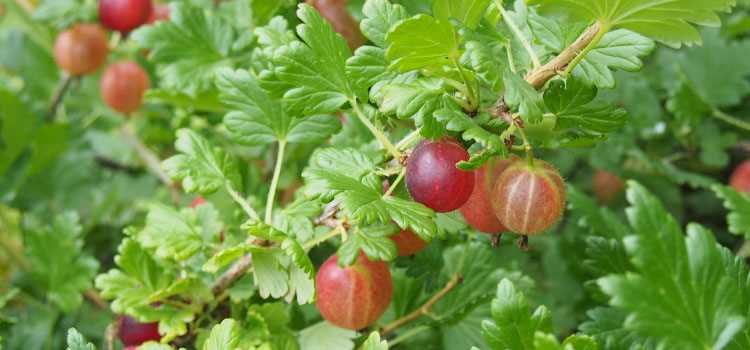
Water your gooseberry plants carefully, making sure to provide enough moisture without overwatering. Avoid overhead watering, as this can promote the spread of fungal diseases. Instead, use drip irrigation or water directly at the base of the plants.
9. Regular Inspections
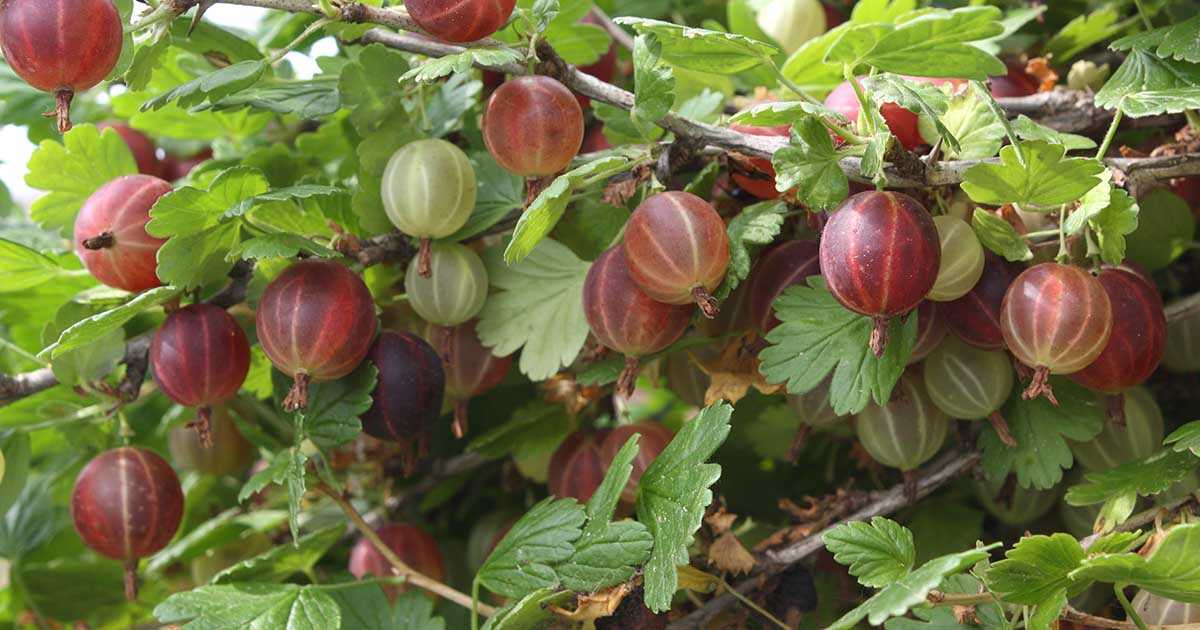
Inspect your gooseberry plants regularly for any signs of pests or diseases. Catching problems early can help prevent further spread and damage.
By following these tips, you can protect your gooseberry plants from pests and diseases and enjoy a healthy crop of hen’s egg-sized berries.
Harvesting and Storing Gooseberries
Harvesting gooseberries at the right time is crucial to ensure the best flavor and texture. Here are some tips on when and how to harvest and store your gooseberries:
1. Timing:
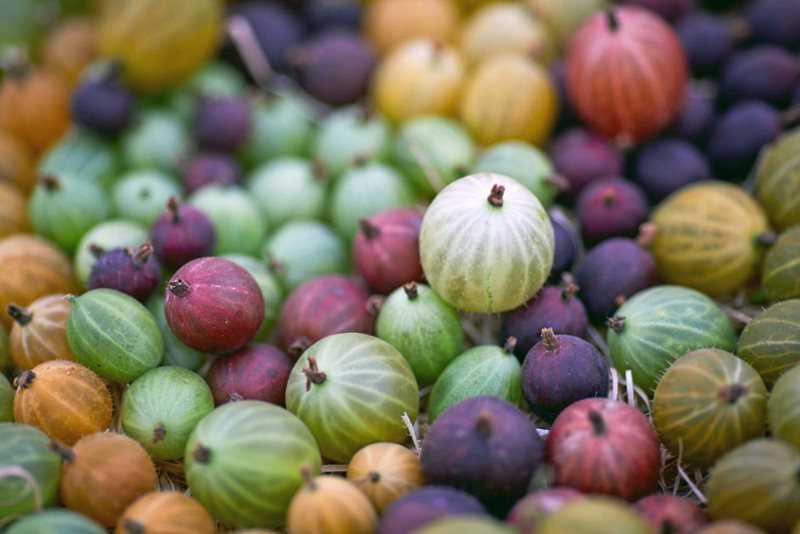
Gooseberries are ready to be harvested when they have reached their full color and firmness. This typically occurs in late spring or early summer, depending on the variety and your location. The berries should be plump and slightly soft to the touch, but not mushy.
2. Harvesting:
To harvest gooseberries, hold the stem of the fruit and gently twist it off the branch. If the berries don’t come off easily, they may not be fully ripe yet. Leave them on the bush for a few more days and check again. Avoid pulling or tugging on the berries, as this can damage the plant.
3. Storing:
If you’re not planning on using the gooseberries immediately, it’s essential to store them properly to maintain their freshness and flavor. Here are a few options for storing gooseberries:
- In the refrigerator: Place the harvested gooseberries in a container or a plastic bag and store them in the refrigerator. They can stay fresh for up to two weeks when stored this way.
- Freezing: If you want to preserve the gooseberries for a longer period, you can freeze them. Wash the berries, remove any stems or leaves, and dry them thoroughly. Arrange the berries in a single layer on a baking sheet and freeze them for a few hours. Once frozen, transfer the berries into airtight containers or freezer bags. They can be stored in the freezer for up to a year.
- Canning: Another option is to can the gooseberries. Prepare the berries by washing and removing stems and leaves. Place the gooseberries in sterilized jars and cover them with a sugar syrup or water. Seal the jars and process them in a water bath canner according to the canning instructions. Canned gooseberries can last up to a year when stored in a cool, dark place.
4. Enjoying Fresh or Preserved:
Whether you eat fresh gooseberries or use them in recipes, they make a delightful addition to a variety of dishes. You can enjoy them raw, add them to fruit salads, make jams and jellies, or use them in pies and desserts. Experiment with different recipes to make the most of your harvest!
Follow these harvesting and storing tips to enjoy the bounty of your gooseberry bush throughout the year. With proper care, you can savor the unique flavor of gooseberries in various culinary creations.
Growing Gooseberries for Hen’s Egg-Sized Berries
If you’re a fan of gooseberries and want to grow your own, why not try growing gooseberries to produce hen’s egg-sized berries? With a little bit of care and attention, you can grow your own giant gooseberries that are sure to impress.
Choose the Right Variety
When selecting a gooseberry variety, look for ones that are known for producing large berries. Some recommended varieties include Invicta, Pax, and Careless. These varieties have been bred specifically for their size and are more likely to produce hen’s egg-sized berries.
Plant in the Right Location
Gooseberries thrive in well-drained soil and prefer a sunny location. Make sure to choose a spot in your garden that receives at least 6-8 hours of direct sunlight each day. Avoid planting them in low-lying areas where water tends to accumulate, as this can lead to root rot.
Provide Adequate Water
While gooseberries can tolerate some drought, they still require regular waterings to produce large berries. Water them deeply once a week, especially during dry periods. Avoid over-watering, as this can cause the roots to rot.
Prune Regularly
Pruning is important to ensure good air circulation and prevent the spread of diseases. In early spring, remove any dead or damaged branches. Then, select 3-4 healthy, strong branches to keep and prune the rest. This will help your gooseberry bush focus its energy on producing larger berries.
Fertilize Appropriately
Gooseberries benefit from regular fertilization to promote growth and berry production. Use a balanced fertilizer, such as a 10-10-10, in early spring when new growth appears. Follow the package instructions for application rates.
Protect from Pests
Gooseberries are susceptible to a variety of pests, including aphids, gooseberry sawfly, and birds. To protect your crop, consider covering the bushes with netting to keep birds away. Monitor your plants regularly for signs of pests and treat them accordingly.
Harvest at the Right Time
Once your gooseberries reach the size of hen’s eggs, they are ready to be harvested. Carefully remove them from the bush, taking care not to damage the surrounding branches. Mature gooseberries are firm and slightly soft to the touch.
By following these tips, you can grow your own gooseberries that are as large as hen’s eggs. Enjoy the satisfaction of growing your own giant berries and the delicious flavor they bring to your table!
Question-answer:
What are some tips for growing gooseberries?
Some tips for growing gooseberries include planting them in well-drained soil, providing regular watering, applying a layer of mulch around the plants, and pruning them during the dormant season.
Can gooseberries grow in any climate?
While gooseberries can tolerate a range of climates, they prefer cool temperate regions. They can be grown in both northern and southern hemisphere, but they may struggle in extreme heat or cold.
How long does it take for gooseberries to produce hen’s egg-sized berries?
The time it takes for gooseberries to produce hen’s egg-sized berries can vary depending on the variety and growing conditions. On average, it can take two to three years for a gooseberry bush to start producing full-sized berries.
Are there any pests or diseases that affect gooseberries?
Yes, gooseberries can be susceptible to certain pests and diseases. Some common ones include aphids, sawfly larvae, powdery mildew, and leaf spot. Taking preventive measures such as regular inspection and proper pruning can help minimize these problems.
What is the best time to prune gooseberry bushes?
The best time to prune gooseberry bushes is during the dormant season, which is typically in late winter or early spring before new growth begins. Pruning during this time allows the plant to recover and encourages better fruit production.
Can gooseberries be grown in containers?
Yes, gooseberries can be grown in containers as long as the containers are large enough to accommodate the root system. Choose a dwarf or compact variety and provide adequate drainage. Regular watering and fertilizing are important for container-grown gooseberries.
How often should gooseberry plants be watered?
Gooseberry plants should be watered regularly to keep the soil consistently moist. During dry periods or hot weather, they may need watering 2-3 times per week. However, it’s important not to overwater, as gooseberries don’t tolerate waterlogged soil.







